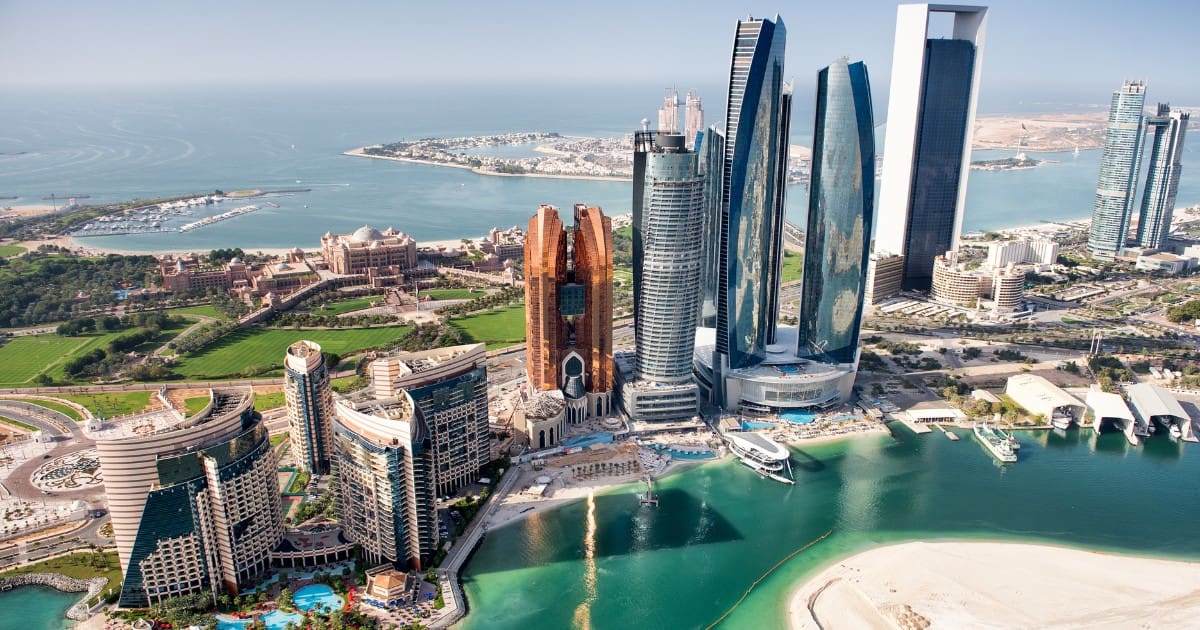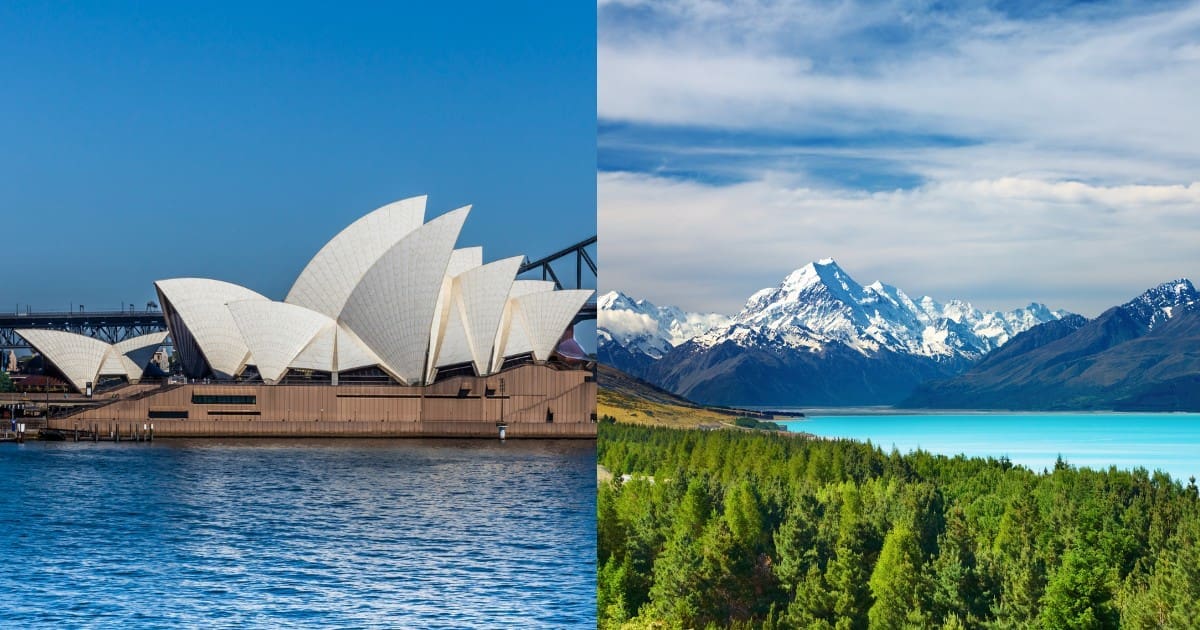Namibia is the second-least-densely populated country in the world, just after Mongolia. As of 2024, it has just eight people for every square mile. In this complete Namibia travel guide for 2024, you’ll learn everything you need to know for hassle-free travel.
This vast southern African country is special with its ancient Namib Desert. You’ll see towering orange sand dunes of Sossusvlei and a coast filled with shipwrecks. From the wildlife-rich Etosha National Park to the rugged Fish River Canyon, Namibia is a great adventure.
When to Visit Namibia?
Determining the best time to visit Namibia depends on your preferences. If you love wildlife viewing, go in the dry season from June to September. It’s the best time to travel to Namibia.
The weather is pleasant, with temperatures ranging from 20°C (68°F) to 25°C (77°F) and little rain, making it the peak travel season.
Best Time for Wildlife Viewing
In the dry months, animals gather around waterholes, making it easier to see them. September stands out because of its warm, sunny days. The weather is perfect for seeing lots of animals like cheetahs, honey badgers, springbok, and oryx (Namibia’s national animal).
Shoulder Seasons
If you prefer cooler weather and fewer people, consider going in April-May or October-November. The weather starts cooling down in April and May, with temperatures averaging between 25°C (77°F) and 30°C (86°F).
Rainfall decreases, and the landscape begins to dry out. October and November are part of the brief spring season, with rising temperatures and minimal rainfall, ranging from 20°C (68°F) to 30°C (86°F).
Rainy Season Considerations
From November to April, it’s the rainy season in Namibia, especially in February (the rainiest month). There may be thunderstorms, and it gets quite humid, turning the land green and offering a fresh perspective.
However, the rain can make some places hard to reach. Still, it’s a great time to go birdwatching in the Caprivi Strip, where you can spot migratory birds.
| Month | Temperature Range | Highlights |
|---|---|---|
| June – September | 20°C (68°F) to 25°C (77°F) | Peak travel season, best for wildlife viewing |
| September | Warm, sunny weather | Ideal for game viewing around waterholes |
| January | 30°C (86°F) to 40°C (104°F) | Mid-summer, occasional torrential downpours |
| November – February | 20°C (68°F) to 34°C (93°F) | Excellent birdwatching in Caprivi Strip |
| April – May | 25°C (77°F) to 30°C (86°F) | Transitional period from wet to dry season |
| October – November | 20°C (68°F) to 30°C (86°F) | Rising temperatures, minimal rainfall |
Activities to Do in Namibia
- Wildlife Viewing: The best time for this activity is during the dry season from June to October, especially in Etosha National Park, where animals congregate around waterholes. You can see elephants, zebras, wildebeest, and various predators.
- Climbing Dunes in Sossusvlei: The towering red sand dunes, including Dune 45 and Big Daddy, offer breathtaking views and challenging climbs. The cooler months are ideal for this activity to avoid the intense summer heat.
- Visiting Fish River Canyon: One of the world’s largest canyons, it is particularly stunning during sunrise and sunset. Hiking the 90 km trail offers an immersive experience of the canyon’s vastness.
- Bird Watching and Marine Wildlife: The Skeleton Coast and Cape Cross are excellent for spotting sea lions and rare dolphins, while migratory birds can be observed throughout the year.
- Star Gazing: Namibia’s clear skies, especially during the dry season, make it perfect for stargazing. Locations like the Gamsberg Plateau provide some of the best views of the southern hemisphere’s night sky.
Deciding the best time to visit Namibia depends on what you love and your travel budget. If you adore wildlife, pick the dry season.
Want to avoid crowds but see beautiful places? Go in April-May or October-November. Namibia is an amazing travel destination all year round, offering something special no matter when you visit.
How to Get to Namibia?
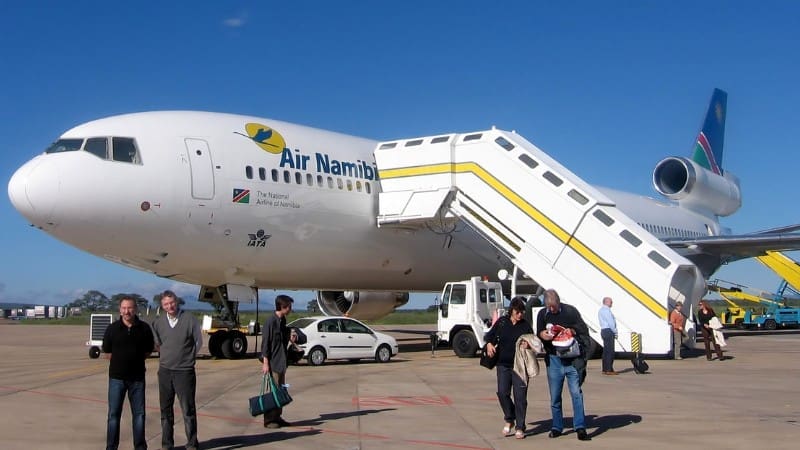
Traveling to Namibia is straightforward, with several options available, whether you are flying, driving, or using a combination of transportation methods. Here’s a detailed Namibia travel guide on how to reach this beautiful country:
By Air
The most common way to get to Namibia is by flying. The primary international gateway is Hosea Kutako International Airport (WDH) in Windhoek. There are direct flights to Namibia from Germany, South Africa, Angola, and Ethiopia.
Most travelers from Europe typically fly via Frankfurt, Germany. There are also connecting flights through major hubs like Johannesburg and Cape Town in South Africa, as well as Addis Ababa in Ethiopia.
Airlines: Major airlines that operate flights to Namibia include Lufthansa (direct from Frankfurt), Ethiopian Airlines (via Addis Ababa), and Qatar Airways (expected to resume flights from Doha). AirLink also offers flights from Johannesburg to Windhoek.
By Road
For those preferring to drive, Namibia is accessible by road from neighboring countries such as South Africa, Botswana, Zambia, and Angola. The roads are well-maintained, but it’s essential to be prepared for long distances and varying road conditions.
Car Rental: Renting a car in Namibia is a popular choice for exploring the country at your own pace. Ensure you have all necessary documents, including a valid driver’s license, vehicle registration papers, and a letter of authority if the car is rented or not in your name.
Entry Requirements
- Passport: Must be valid for at least six months from the date of entry.
- Visa: Many nationalities, including citizens from the EU and the USA, can obtain a 30-day visa on arrival. However, it’s advisable to check specific visa requirements based on your nationality.
- Return Ticket: Proof of onward or return travel is required.
- Health Precautions: Ensure you have the necessary vaccinations and take preventive measures for malaria if visiting high-risk areas.
Cost of Getting to Namibia
The cost of flights to Namibia can vary depending on the season, departure city, and how far in advance you book. Here are some general cost estimates:
- Flights: From Europe (e.g., London) to Windhoek, round-trip flights typically range from $750 to $1,000 USD. Prices can be higher during peak travel seasons.
- Driving Costs: If entering by car from neighboring countries, consider costs for fuel, tolls, and any required cross-border documentation and insurance.
How Much Does a Trip to Namibia Cost?
Namibia is a great place to visit that won’t hurt your wallet much. You can have an amazing adventure in Namibia with smart planning. Even if the trip isn’t super cheap, it can still be within reach.
| Expense | Cost | Transport | Details | Peak Season (per night/day) |
|---|---|---|---|---|
| Transportation | $30-$100 per day | Car Rental | -Car Rental: $30-$100 -Fully equipped rental truck: $85 (low season), $130 (high season) -Intercape Bus Service: Windhoek to Livingstone: $55 -Guided Tours: $125 per day per person (includes transport, accommodation, meals, guides) | $85-$130 |
| Food | $10-$50+ per meal | Budget meals | -Budget: $10-$15 per day (self-cater or local eateries)-Mid-range: $25 – $40 per day-High-end: $50+ per meal | $50+ |
| Activities | $6-$200 per day | National Park Entry Fees | -National Park Entry Fees: $6-$10 per day -Adventure Activities (e.g., sandboarding, quad biking): $30-$70 -Safari Experiences and Guided Tours: $100-$200 per day | $100-$200 |
How to Get Around Namibia?
Exploring Namibia’s wide, empty spaces is an adventure all its own. As I mapped out my Namibia travel blog, I saw that touring this amazing country needs some thought.
From my own observation, many choose to drive themselves for the best Namibia travel experiences. Here are the best ways to get around this fascinating country:
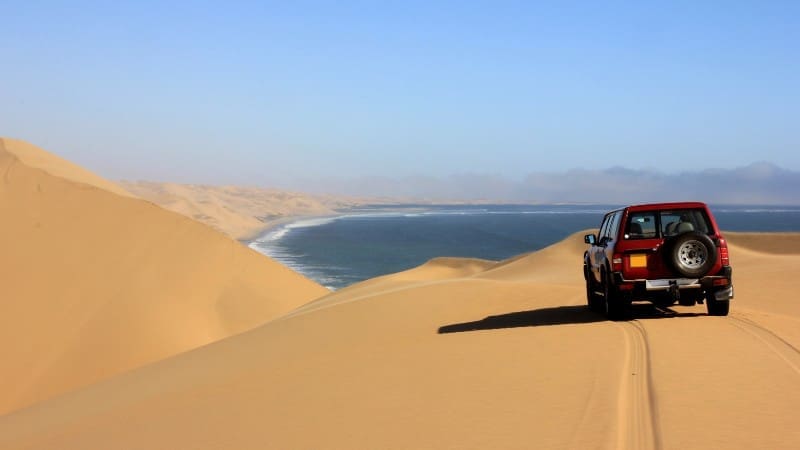
Rental Cars and Self-Driving
The most popular way to travel in Namibia is by renting a car. The wide-open roads, stunning desert scenery, and relative lack of traffic make it an ideal place for a road trip.
In Windhoek, the capital, you’ll find many rental companies offering everything from basic 2WD vehicles to fully equipped 4WD trucks with camping gear. Here’s a detailed table to help you choose the right rental car for your needs:
| Rental Car Type | Average Daily Rate (USD) | Recommended For |
|---|---|---|
| Standard Car | $30-$50 | -City travel -Short distances on paved roads -Exploring urban areas like Windhoek and Swakopmund |
| 2×2 SUV | $50-$85 | -Longer trips on main roads -Some gravel roads -Visiting national parks and scenic areas with basic road conditions |
| 4×4 Vehicle | $85-$130 (Low Season)$130-$150 (High Season) | -Extensive off-road driving -Desert exploration -Remote areas -Adventurous travelers -Camping and exploring rugged terrains like Sossusvlei and Etosha National Park |
Additional Considerations
- Insurance: Ensure you understand the coverage, including collision and theft damage waivers. Extra insurance for tires, windscreen, and headlights is advisable due to gravel road conditions.
- Driving Age: Drivers of 2WD cars generally need to be over 21, while for 4WD vehicles, the minimum age is often 25.
- Fuel: Petrol stations are sparse, especially in remote areas, and many only accept cash. It’s crucial to carry spare fuel canisters for longer trips.
- Driving Side: Cars drive on the left.
- Speed Limits: 120kph on highways, 80kph on gravel roads, 60kph in urban areas and reserves.
- Safety: Avoid driving at night due to wildlife and livestock on the roads. Always carry spare fuel, water, and a basic repair kit, especially if you’re heading into remote areas.
Organized Tours
If you prefer not to drive, consider joining an organized tour. These tours range from budget-friendly camping trips to luxurious, all-inclusive safaris.
Companies like Intrepid and Nomad offer comprehensive packages that include transport, activities, and most meals. Overland tours start at about $125 per person per day. This option is perfect for solo travelers or those who want to relax and let someone else handle the logistics.
Public Transportation
Public transport options in Namibia are limited but available. Long-distance buses connect major towns and cities.
For example, a bus ride from Windhoek to Livingstone, Zambia, costs about $55. While this is a budget-friendly option, it’s less flexible and more time-consuming compared to self-driving. Here’s a table detailing all your public transportation options in Namibia:
| Transportation Type | Cost Range (USD) | Route/Service | Additional Information |
|---|---|---|---|
| Buses | $55-$85 | -Windhoek to Livingstone: $55 -Windhoek to Springbok: $65-$85 | -Reliable long -Distance travel -Check schedules in advance |
| Taxis | $1-$3 per ride | -Common in cities like Windhoek and Swakopmund | -Agree on fare before starting the ride -Registered taxis have large numbers on the side and back a window |
| Trains | $6-$15 | -TransNamib routes: Limited stops -Desert Express: Luxury weekly service, starting at $295 | -TransNamib is economical -Desert Express offers a luxury experience |
| Organized Tours | $125 per day | -Cover transport, activities, accommodation, and most meals | -Ideal for hassle-free travel -Suitable for solo travelers and those preferring guided experiences |
What are the Top Destinations and Attractions in Namibia?
Namibia is packed with amazing spots that you should definitely visit. Here are some of the best places that I think you’ll love:
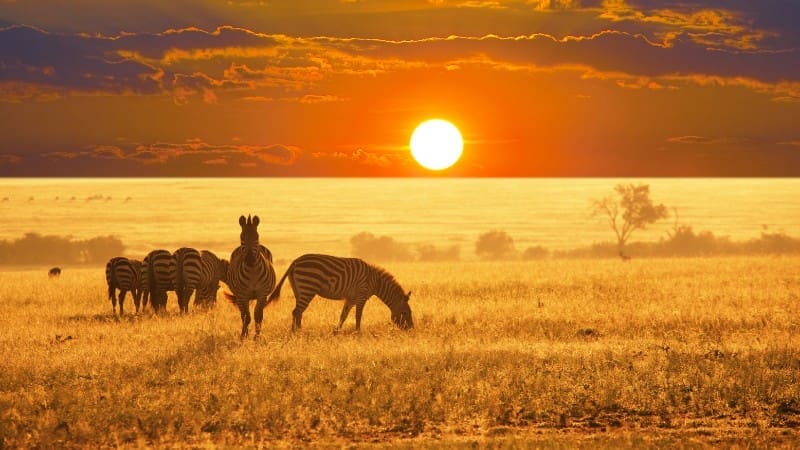
Etosha National Park
If you love seeing animals in their natural habitat, Etosha National Park is the place for you. You’ll get to see elephants, lions, rhinos, and many kinds of antelope. We visited several waterholes where animals gather, making it easy to watch them up close. It’s a truly unforgettable experience.
Sossusvlei
Sossusvlei is home to some of the world’s tallest sand dunes. When I climbed Dune 45, the view was breathtaking. The contrast between the dark dead trees and the bright orange dunes at Deadvlei is stunning. If you’re into photography, this place is a goldmine.
Fish River Canyon
Fish River Canyon is one of the biggest canyons on Earth. We hiked a part of the 85-kilometer Fish River Canyon Trail, which was challenging but worth every step. There are also shorter trails and lookout points if you prefer a less strenuous visit.
Swakopmund
Swakopmund is a coastal town where adventure awaits. We had so much fun quad-biking and sandboarding on the dunes. The town’s German colonial architecture adds a unique charm, and there are plenty of good restaurants to enjoy.
Kolmanskop Ghost Town
Kolmanskop is a fascinating abandoned diamond mining town. Walking through buildings filled with sand was like stepping into a different world. It’s eerie yet captivating and gives you a glimpse into Namibia’s history.
Twyfelfontein
Twyfelfontein is a UNESCO World Heritage Site known for its ancient rock engravings. We saw over 5,000 carvings depicting animals and scenes from everyday life. It’s amazing to see art that’s thousands of years old and learn about the people who created it.
Spitzkoppe
Spitzkoppe, also known as the “Matterhorn of Namibia,” is perfect for hiking and rock climbing. We explored the granite peaks and found some ancient rock paintings. The views are spectacular, especially at sunrise and sunset.
Cape Cross Seal Reserve
At Cape Cross, we saw thousands of cape fur seals. It’s one of the largest colonies in the world. The seals were everywhere, basking on the beach and swimming in the ocean. The smell can be strong, but it’s worth it for the unique experience.
Waterberg Plateau Park
Waterberg Plateau Park is a sanctuary for endangered animals. We hiked up the plateau and were rewarded with stunning views and sightings of rhinos, buffalo, and many bird species. It’s a paradise for nature lovers.
Lüderitz
Lüderitz is a charming coastal town with a strong German influence. We explored colorful buildings, old churches, and enjoyed the local seafood. Don’t miss a visit to the nearby ghost town of Kolmanskop, just a short drive away.
Where to Stay in Namibia?
When planning a trip to Namibia, you’ll find many places to stay that fit different budgets and styles. Here’s a look at your options, whether you’re a backpacker, a family on vacation, or someone looking for luxury. This Namibia travel guide will help you find the perfect spot.
| Type of Accommodation | Price Range (USD) | Details | Location |
|---|---|---|---|
| Hostels | $20-$30 | Chameleon Backpackers Hostel: Clean rooms, free Wi-Fi, breakfast included. | Windhoek |
| Budget Hotels | $50-$80 | Onguma Bush Camp: Near Etosha National Park, offering comfortable rooms and an on-site restaurant. | Near Etosha National Park |
| Mid-Range Hotels | $50-$100 | Cornerstone Guesthouse: Cozy rooms with private bathrooms, secure parking, breakfast included. | Swakopmund |
| Luxury Lodges | $200-$500 | Grootberg Lodge: Stunning views, spacious rooms, excellent dining options, guided tours included. | Damaraland |
When booking your stay, consider these tips to make this complete Namibia travel guide even more helpful:
- Book in Advance: Especially during peak season, booking ahead can get you better rates and ensure availability.
- Self-Catering Options: If you’re staying for a while, self-catering apartments can be more economical. Prices for these start around $65 per night.
- Location: Consider your itinerary and choose accommodation that makes it easy to get around. Staying in places like Windhoek or Swakopmund gives you access to many amenities and tourist spots.
What To Pack When Visting Namibia?
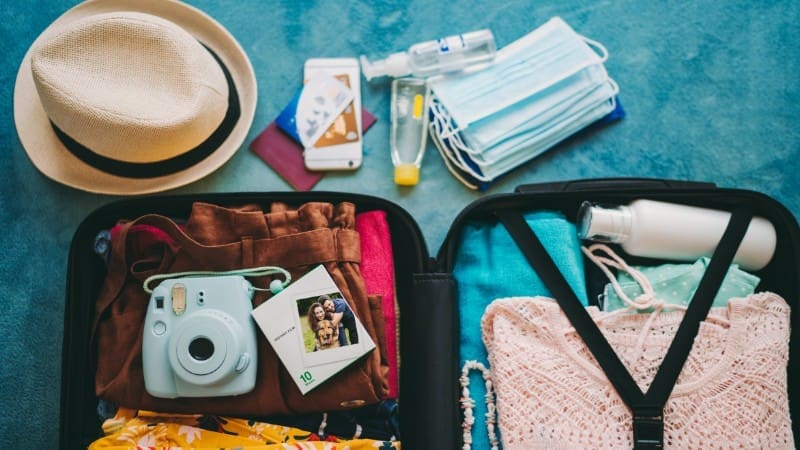
Planning your trip to Namibia involves more than just booking flights and accommodations. Packing the right items can make a big difference in your comfort and experience. Here’s a comprehensive packing list to help you prepare for your adventure.
| Category | Items to Pack | Quantity | Notes |
|---|---|---|---|
| Clothing | T-shirts | 5-7 | Lightweight and breathable |
| Shorts | 2-3 pairs | For hot days | |
| Lightweight Pants | 2 pairs | Protects from sun and insects | |
| Long-sleeved Shirts | 2-3 | Sun and insect protection | |
| Sweaters/Fleece Pullover | 1-2 | For cooler evenings and mornings | |
| Windproof Jacket | 1 | Essential for desert nights | |
| Hiking Boots | 1 pair | Comfortable and sturdy | |
| Flip-flops | 1 pair | For beach and showers | |
| Swimsuit | 1 | For pools at lodges | |
| Essentials | Sun Hat | 1 | Sun protection |
| Sunglasses | 1 pair | Protect eyes from UV rays | |
| High SPF Sunscreen | 1 bottle | Prevent sunburn | |
| Refillable Water Bottle | 1 (2 liters) | Stay hydrated | |
| First Aid Kit | 1 | Include basic medications, band-aids, antiseptic wipes | |
| Toiletries | Various | Biodegradable soap, shampoo, hand sanitizer, nail brush, lotion, lip balm | |
| Insect Repellent | 1 bottle | Protect from mosquitoes and other insects | |
| Mosquito Net | 1 | For added protection during sleep | |
| Gadgets | Camera | 1 | Capture memories |
| Spare Batteries | 2-3 | For camera | |
| Memory Cards | 2-3 | Extra storage for photos | |
| Binoculars | 1 pair | For wildlife viewing | |
| Headlamp | 1 | Useful for camping and power outages | |
| Travel Adapter | 1 | Plug types D and M | |
| Miscellaneous | Guidebook | 1 | Helpful for self-guided tours |
| Map | 1 | Useful for navigation | |
| Reusable Bags | 3-4 | Organize luggage and protect electronics | |
| Snacks | Enough for long drives | Keep energized on the road |
This table should help you pack effectively for your trip to Namibia, ensuring you have all the essentials for a comfortable and enjoyable experience.
How Safe is Namibia?
Namibia is generally considered one of the safer countries in Africa for travelers, but it’s important to be aware of certain safety concerns and take precautions. Here’s what you need to know about staying safe in Namibia in 2024.
Crime
Crime is a concern, especially in urban areas like Windhoek, the capital. Common issues include pickpocketing, purse snatching, and “smash-and-grab” attacks on vehicles.
These crimes often escalate to muggings and robberies, especially after dark. It’s advisable to avoid walking alone at night, keep your car doors locked, and avoid displaying valuables in public.
Road Safety
Driving in Namibia can be tough because of the long distances between destinations and the condition of the roads. Many roads are gravel and can be hazardous, especially after rain.
Wildlife and livestock often wander onto roads, which poses additional risks. It’s recommended to avoid driving at night and ensure your vehicle is well-equipped with spare tires, a first-aid kit, and plenty of water.
Health Concerns
Namibia has regions where malaria is present, particularly in the north and northeast, including Etosha National Park and the Zambezi Region.
Travelers should take preventive measures such as using mosquito nets, wearing long-sleeved clothing in the evenings, and taking antimalarial medication as advised by a healthcare provider.
Vaccinations for Hepatitis A and B, Typhoid, and routine vaccinations are recommended before traveling.
Natural Hazards
During the rainy season (November to March), floods and flash floods can occur, making some areas impassable. It’s essential to stay informed about weather conditions and have a contingency plan in place.
Safety Tips for Travelers
- Avoid Walking Alone at Night: Stick to well-lit and populated areas.
- Secure Your Valuables: Use a money belt or a secure bag, and avoid displaying expensive items.
- Stay Informed: Keep up with local news and weather forecasts.
- Health Precautions: Use insect repellent, sleep under mosquito nets, and stay updated on vaccinations.
- Driving Precautions: Don’t drive at night, carry spare tires and a first-aid kit, and ensure your car rental includes emergency contacts.
How is Local Culture and Etiquette in Namibia?

When visiting Namibia, understanding the local culture and etiquette can greatly enhance your travel experience. Here are some key points to keep in mind:
Greetings and Communication
In Namibia, greetings are very important. When meeting someone, it’s customary to shake hands and greet them with a smile. It’s polite to engage in a bit of small talk before getting to the main topic.
Address elders with titles like “Oom” (uncle) or “Tate” (father) to show respect. Public displays of affection are generally frowned upon, especially in rural areas.
Dress Code
Namibians tend to dress conservatively. It’s important to wear modest clothing, especially in rural areas and when visiting religious or cultural sites.
For women, it’s advisable to avoid wearing revealing outfits. Removing your shoes before entering someone’s home is a sign of respect.
Sharing Food
Sharing food is a common practice in Namibia and is seen as a sign of hospitality. If you’re offered food or drink, it’s polite to accept it. Meals are often communal, with everyone sharing a central dish.
Language
English is the official language of Namibia, but many people also speak Afrikaans, German, and various indigenous languages such as Oshiwambo, Otjiherero, and Damara/Nama. Learning a few basic phrases in the local language can be appreciated and can help you connect with locals.
Here are some helpful phrases in English, their Afrikaans translations, and their pronunciation to assist you during your travels in Namibia.
| English | Afrikaans | Pronunciation |
|---|---|---|
| Hello | Hallo | hah-loh |
| Good morning | Goeie more | khoy-uh moh-ruh |
| Good afternoon | Goeie middag | khoy-uh mid-ahkh |
| Good evening | Goeie naand | khoy-uh nahnt |
| Goodbye | Totsiens | tot-see-ens |
| Please | Asseblief | ah-suh-bleef |
| Thank you | Dankie | dun-kee |
| You’re welcome | Dis ‘n plesier | dis un pleh-seer |
| Excuse me | Verskoon my | fers-koon may |
| Yes | Ja | yah |
| No | Nee | nee |
| How are you? | Hoe gaan dit? | hoo khahn dit |
| I’m fine, thank you | Dit gaan goed, dankie | dit khahn khoot, dun-kee |
| What’s your name? | Wat is jou naam? | vut is yo nahm? |
| My name is… | My naam is… | may nahm is… |
| I don’t understand | Ek verstaan nie | ek fers-tahn nee |
| Could you help me? | Kan jy my help? | khan yay may help? |
| Where is the bathroom? | Waar is die badkamer? | vah is dee bud-kah-mer? |
| How much does this cost? | Hoeveel kos dit? | hoo-feel koss dit? |
| I would like… | Ek wil graag… | ek vil khrahkh… |
| Water | Water | vah-ter |
| Food | Kos | koss |
| Coffee | Koffie | koh-fee |
| Tea | Tee | tay |
| Beer | Bier | beer |
| Wine | Wyn | vayn |
| Is it safe here? | Is dit veilig hier? | is dit fay-likh heer? |
| Call the police | Bel die polisie | bel dee poh-lee-see |
| I need a doctor | Ek het ‘n dokter nodig | ek het un dok-ter noo-dikh |
| I’m lost | Ek is verdwaal | ek is fer-dwahl |
| Where is… | Waar is… | vah is… |
| Can I take a photo? | Kan ek ‘n foto neem? | khan ek un foh-toh neem? |
Festivals and Celebrations
Namibia hosts several vibrant festivals that celebrate its diverse cultural heritage. Some notable events include the Windhoek Karneval, Ongwediva Trade Fair, Himba Festival, and the Kalahari Desert Festival. These festivals offer a chance to experience traditional music, dance, and other cultural expressions.
Respect for Elders
Elders hold a significant place in Namibian society. They are often consulted for advice and guidance. Showing respect by greeting them properly and using titles is crucial.
Hand Gestures
In Namibian culture, it’s considered impolite to point with your finger. Instead, use your whole hand to gesture. Avoid using your left hand to give or receive items, as it is considered unclean.
How many days is enough in Namibia?
For a solid experience of Namibia, 10 to 14 days is ideal. With 10 days, you can visit top spots like Sossusvlei, Etosha National Park, and Swakopmund. This allows a good mix of wildlife viewing, adventure activities, and exploring unique landscapes. Two weeks lets you add destinations like Fish River Canyon and the Skeleton Coast, offering a more comprehensive view of the country’s attractions.
Why do most tourists travel to Namibia?
Tourists flock to Namibia for its stunning natural beauty and diverse wildlife. The towering dunes of Sossusvlei and the Namib Desert’s dramatic landscapes are major draws. Etosha National Park offers incredible wildlife viewing, including elephants, lions, and rhinos. Adventure seekers enjoy activities like sandboarding and hiking, while the rich cultural heritage adds a unique touch to the travel experience.
What currency to bring to Namibia?
The Namibian Dollar (NAD) is the official currency, but the South African Rand (ZAR) is also widely accepted. It’s best to bring some NAD or ZAR for small purchases, especially in rural areas. Credit and debit cards are accepted in cities and larger establishments, but having cash is useful for markets and tips. Major currencies like USD, EUR, and GBP can be exchanged at banks and currency exchange offices. ATMs are available in larger towns but scarce in remote areas, so withdraw enough cash before heading out.

